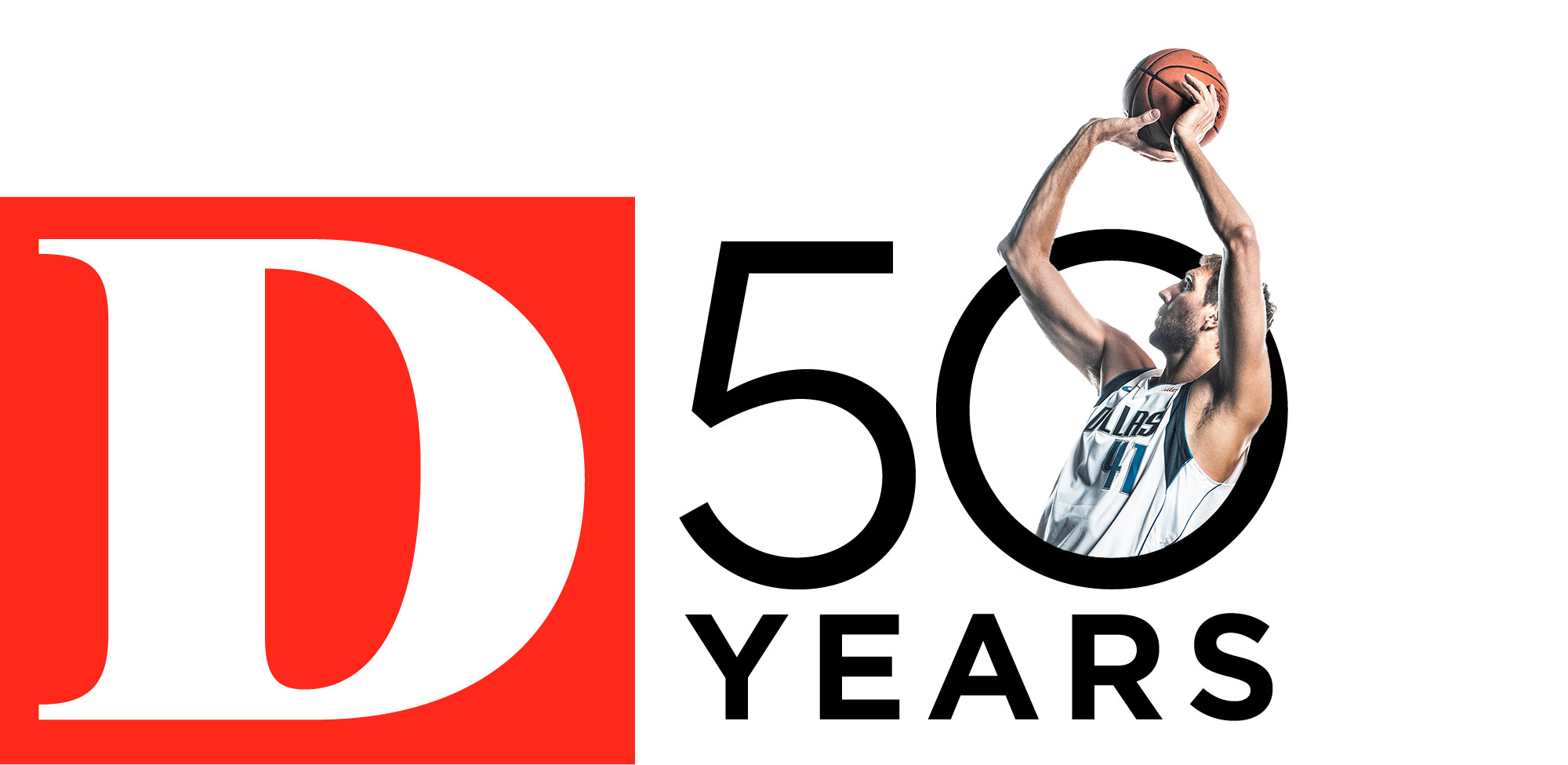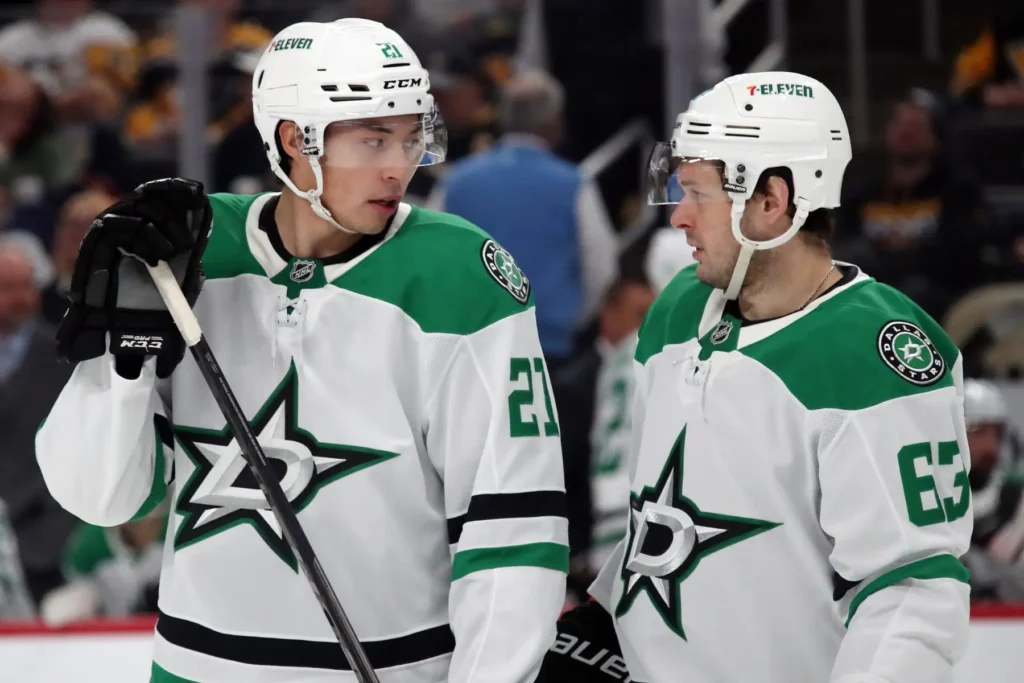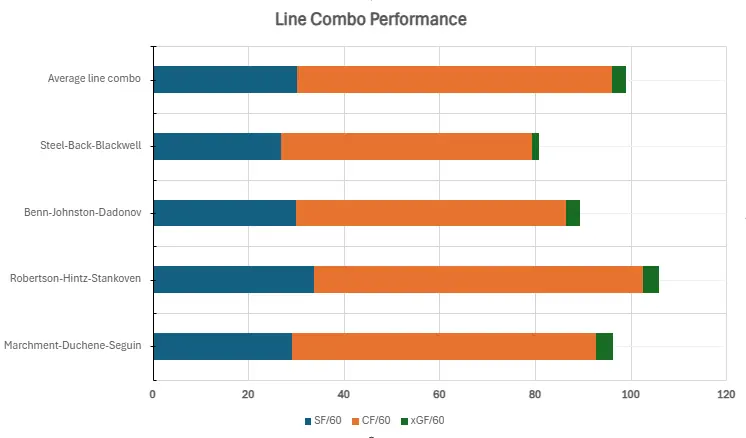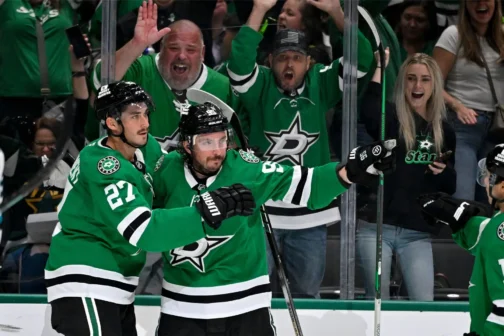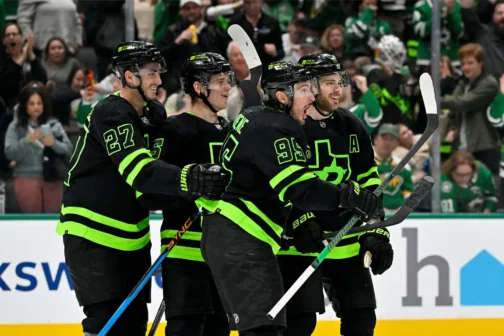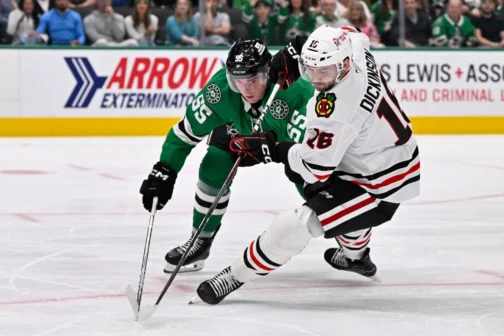It doesn’t make sense. The Dallas Stars were the premier offensive team last season, imposing their will with the kind of depth that became the envy of the league. That was no fluke, either. In the Stars’ first two seasons under Pete DeBoer, they were fifth in goals, with 297, just below the star-studded Toronto Maple Leafs and last year’s Stanley Cup Finalists. Through 14 games this season, however, they’re down to 46 goals, the same amount as the forever-tanking Columbus Blue Jackets.
That has led to some understandable consternation on social media. While the Stars are third in the Central, teams with Cup aspirations get scrutinized more. And the offensive shortcomings have created several performances worth scrutinizing (the Pittsburgh game notwithstanding). While the trip to Finland was memorable for plenty of reasons more important than hockey, back-to-back losses to the Stanley Cup champion Florida Panthers fueled the narrative that Dallas can’t beat a team with a winning record (which they haven’t). Then the Jets game happened. Unlike against the Panthers, where Dallas could at least point to puck luck working against, Winnipeg danced all over the Stars, letting the boys in Victory Green know who is boss in the division in a 4-1 drubbing.
However, there’s a perfectly rational explanation for Dallas’ offensive struggles: it’s early. With just 13 games, there’s simply no reason to hit the panic button. The Stars are shooting at 7 percent at even-strength, which is below their previous runs of 8 and 9 percent under DeBoer, and will regress. Players such as Wyatt Johnston and Logan Stankoven aren’t getting the bounces. Neither are Roope Hintz or Jason Robertson. Even if they were half the players we know they are, their current point paces wouldn’t be sustainable.
The real question is not whether the Stars will improve, but what that improvement will look like. Before beginning this analysis, I want to explain why I will mostly ignore the power play discussion, even though it is a big part of the problem. Right now, Dallas is on track to score 52 power play goals. That’s eight fewer than the amount scored last season and 13 fewer than the year before that. The special-teams failures were a big story in the Edmonton series, but whatever fans think of Steve Spott, the Stars are sixth on the man advantage in their two full seasons under him and fifth in expected goals per 60. I agree with discerning fans that there is a story here, but that story will take more games for it to unfold before we make regular-season judgments. So if that’s not the main story, what is?
The line combinations. They’re an absolute mess. While injuries to Mason Marchment, Tyler Seguin, and Mavrik Bourque have been ill-timed, the Stars are once again one of the healthiest teams in the league. That makes the offensive ineffectiveness a problem of the Stars’ own doing. Below is a look at Dallas’ most common line combinations, with a focus on their offense, starting with their rate of shots on net (blue portion), shot attempts (orange), and shot quality (green). Using a stacked bar chart, how does the totality of how they perform stack up to the current league average among line combos with at least 40 minutes together?
Not good.
Only the new-look (and not fully used) top line of Robertson, Hintz, and Stankoven is performing above league average as a combination of good possession and threat levels. If you’re wondering why the Duchene line doesn’t pass the mathematical smell test, it’s because it has been on the ice for only three even-strength goals. Almost half of Duchene’s production is on the power play. It’s great that the trio seems to be producing away from one another, but with Mason Marchment going pointless over his last four games, it’s very likely that this line, which DeBoer has been unwilling to break up, will hit the same wall it smacked into last season, when the trio lacked the ability to dominate possession. It was great to see them go ballistic against Pittsburgh, but the Penguins are failing so spectacularly that they’re already having a fire sale a month into the season.
Again: 13 games. This should leave us with loose, emotional impressions about the Dallas Stars rather than gloomy judgments. But it also means the Stars forwards are starting in a hole. How big? Robertson and Hintz are on pace for 44 and 57 points, respectively. That’s a 74-point decrease from Evolving-Hockey’s point projections for both, which they predicted would be 99 points for the Stars top left winger and 76 for its number-one center.
The likely rejoinder to a lot of this is that Dallas must miss Joe Pavelski, despite my claims to the contrary before the season began. I don’t doubt there is a certain amount of truth to this. Pavelski was an important figure in that locker room, and his presence marked Dallas’ most successful playoff run as a franchise since the Mike Modano era. But Stankoven, who has spent most of his time on the top line, is on pace for 76 points, well above Pavelski’s point totals from last season. The problems are bigger.
That leaves DeBoer with a tall task ahead, and I don’t think there are any easy solutions. Instead of breaking up a few lines, maybe he needs to break everything. Perhaps it’s time for Bourque to see more than just a few tepid string of shifts in the top six, and maybe play them next to Hintz. Or it could be time to come to terms with Miro Heiskanen’s limited offensive ceiling, and try a five-forward power play unit, the way Toronto did last week. Over the last several games, Nils Lundkvist has gradually seen his ice time increase. Is a pairing with one of the other puck movers in order? Johnston and Stankoven are dynamite together; the Stars are outshooting opponents 14-7 in higher danger chances when they’re on the ice. Maybe it’s time to complement them with someone other than the captain?
If all of this sounds drastic, know that some of these problems were lurking beneath those gaudy surface-level numbers I listed at the top of the piece. Last year’s Stars forward lines posted low possession numbers in the playoffs, too. Similar to what we’re seeing now, only one line (the Johnston line) was above average in high danger chances in the 2024 postseason. Conversely, Florida’s entire top nine generated 3.1 expected goals per 60, well above the playoff average for a forward trio.
Nevertheless, I don’t believe things are as bleak as they might appear, no matter what solutions do or do not come back. And I’m not saying that because of the Pittsburgh game. It’s worth remembering that last season, both goaltenders allowed almost three goals per game, and yet the Stars still found ways to win with a humming offense. This season, the Stars are anemic on offense, and yet goaltending is allowing a full goal less per game. Spott’s power play has ranked in the top 10 for the 164 previous regular season games versus the paltry 13 so far. Once the power play improves—and it will—so will Dallas’ offense. A course correction is coming.
Now we wait to see how long it takes to arrive. It’s going to be an uphill battle, which is either a bad sign in and of itself, or just a sign of early season struggles. We’ll find out which is which—and just how much the Stars can do about it.
Author

